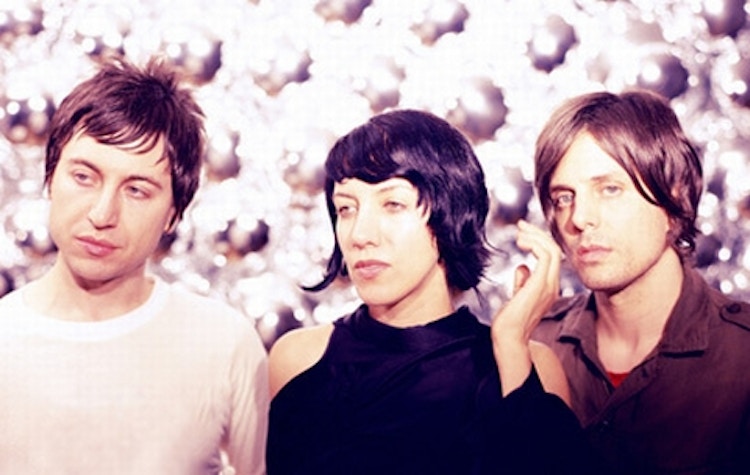"Transit Transit"

It’s sometimes hard to understand the gaps between releases, maybe a whole host of reasons contributing to the absence of a group or artist, easily forgotten in the rush by a seemingly insatiable and constantly shifting listenership changing its musical tastes like it’s underwear. Portishead seemed to be on permanent hiatus until their remarkable Third in 2008, emerging with artistic credibility fully intact. A certain bravery or nerve required? Well maybe, but Autolux have just pulled off the same trick. No new material since their promising debut Future Perfect in 2004, a release quickly lost in quagmire of journalistic pigeonholing and the inevitable comparisons with Sonic Youth. But while that album felt like an ‘homage’ to Thurston and Co., the band’s follow-up is more substantive and interesting. Transit Transit sees Autolux trying out many new things and allowing their true creative potential to come to the fore.
Expectations are well and truly confounded by the album’s opener. Title track ‘Transit Transit’ has a glitchy drum cut-up (made from a sample of an old freezer being slammed shut, apparently… ), and is embellished with the chimes of an upright piano, an instrument liberally sprinkled throughout the album in various guises. The sound is melded together nicely with hypnotic and densely-layered vocals, with more than a passing whiff of stuff Radiohead might have recorded during their full-on electronic period, and there’s even a bit of trumpet thrown in for good measure. The track reveals how the band’s songwriting craft has developed in the intervening years, no doubt off the back of their recent encounters with the likes of PJ Harvey, The Flaming Lips, and particularly, Thom Yorke, who they supported on his latest project ‘Atoms For Peace’.
Comparisons with Sonic Youth are difficult to escape, of course, but on songs like ‘Census’ and ‘Supertoys’, the influences are extended in a more organic and open-ended direction. These are not the toys of Thurston and Co. any more, but rather contain some delightful hooks, grooves and chord progressions in their own right. The unseating of the sound has a lot to do with Eugene Goreshter’s movingly melodic bass, which gives the album a quality not unlike Morphine and the late Mark Sandman’s slide bass drawls, sorely missed. ‘Supertoys’ is shaken to its Sonic Youth aka ‘Washing Machine’ foundations with a murky slurring space-bass sound before being gently restored to Sonic Youth fuzz-pop sensibility by Carla Azar’s heart-rending backing vocal “it’s alright you’re ok just let it be broken, it’s alright you’re ok it’s in your future broken”. Cruel to be kind, eh?
Transit Transit often beats with a beautiful syncopated heart, for example, ‘Highchair’ combines a simple effective drum machine beat with some other overdubs and creeping vocals, an obvious nod to Radiohead’s Kid A and ‘Idioteque’, but no bad thing at all. And again, that recurring low-register bass-drum growl, a beautiful feature on most of the album … time to try out those big speakers again!
There’s also the woozy vocals and richly orchestrated Air-like balladry of ‘Spots’ (is that really a mellotron? Wonderful!). It’s all a long way from the angular/grungy guitar used on Future Perfect. In fact, the highpoints of Autolux’s sophomore effort tend to be those moments when guitar takes a backseat to reveal all the other things going on, songs like ‘Audience No.2’ and ‘The Bouncing Wall’, which are full of curious synthesizer ‘fills’ and plenty of rich ambience built into the sonic structures. These are complex arrangements that coalesce into works of great beauty.
Transit Transit arguably plays to the real strengths of the individual players and convincingly shows off the benefits of being a three-piece, a flexibility of approach as band members switch vocals and instruments to give each song clear musical focus. The band also produced and engineered the album themselves in their own studio, Space 23, in downtown LA. In a song like ‘Kissproof’, Goreshter fires the songs up with great energy and rawness, a sort of Hendrix on bass, something like the new direction The Secret Machines took on their last album (or what we’d come to expect from BRMC until they went alt. country). Greg Edwards’ guitar, on the other hand, soundtracks the album following the mood of each song, but often injects something more subtle into the cracks between the emotional spaces. The wall of death guitar on ‘Headless Sky’ is punctuated with soaring screeches allowing the sound to seemingly ‘hang’ in the air, also found to similar eerie effect on earlier-mentioned ‘Census’ and ‘Audience No.2’. The guitarist settles back into a more conventional role on a song like ‘Supertoys’, blasting it out of the water at the end, something like the Yeah Yeah Yeah’s at their best. And Azar’s percussive stylings are also used to great effect throughout, shaping each song with a rich variety of hook beats, but also showing she’s not afraid to thump the skins with the ferocious intensity of the band’s earlier work, as on the penultimate track ‘Headless Sky’.
Penultimate to …’The Science Of Imaginary Solutions’, the slow-burning 6-minute electronic hybrid, a fitting climax to the album, and announced with Azar’s plaintive vocal: *“and though you thought you’d won the race, waking up was such a waste; the perfect day with the frigid air’s joy; a pretty picture twisted be gone; blinded by my imagination; but everything’s much better now”. And it’s hard to disagree, things really are much better now as I eagerly press ‘repeat to play’. ‘Transit Transit’ doesn’t chart a rapid ascent, but shows this band have arrived at a much more interesting and impressive place than they were six years ago, with a breadth and depth of work here that was missing on Future Perfect. A gap it may be, but musically Autolux have made a quantum leap, immerse yourself in a very bright future indeed …
* I’m not 100% sure these words are correct, best I could do by listening!
Get the Best Fit take on the week in music direct to your inbox every Friday

Wet Leg
moisturizer

MF Tomlinson
Die To Wake Up From A Dream

BIG SPECIAL
National Average






